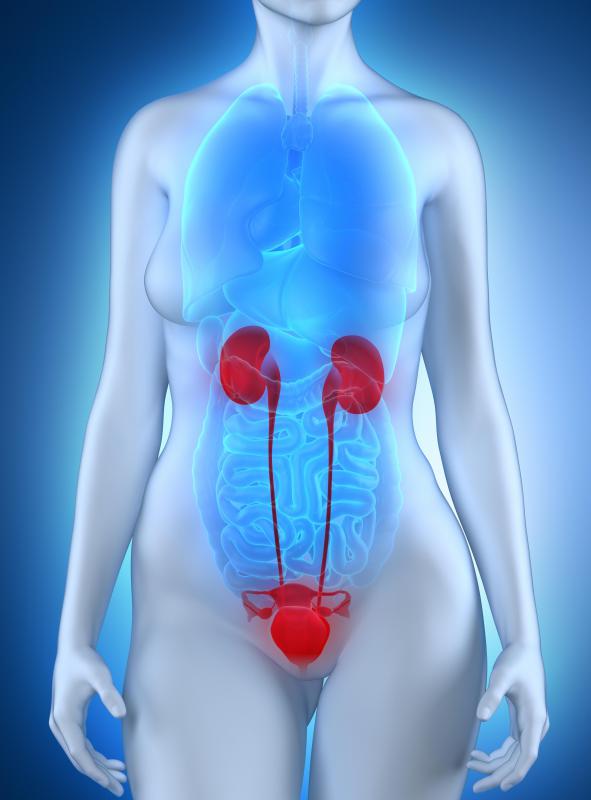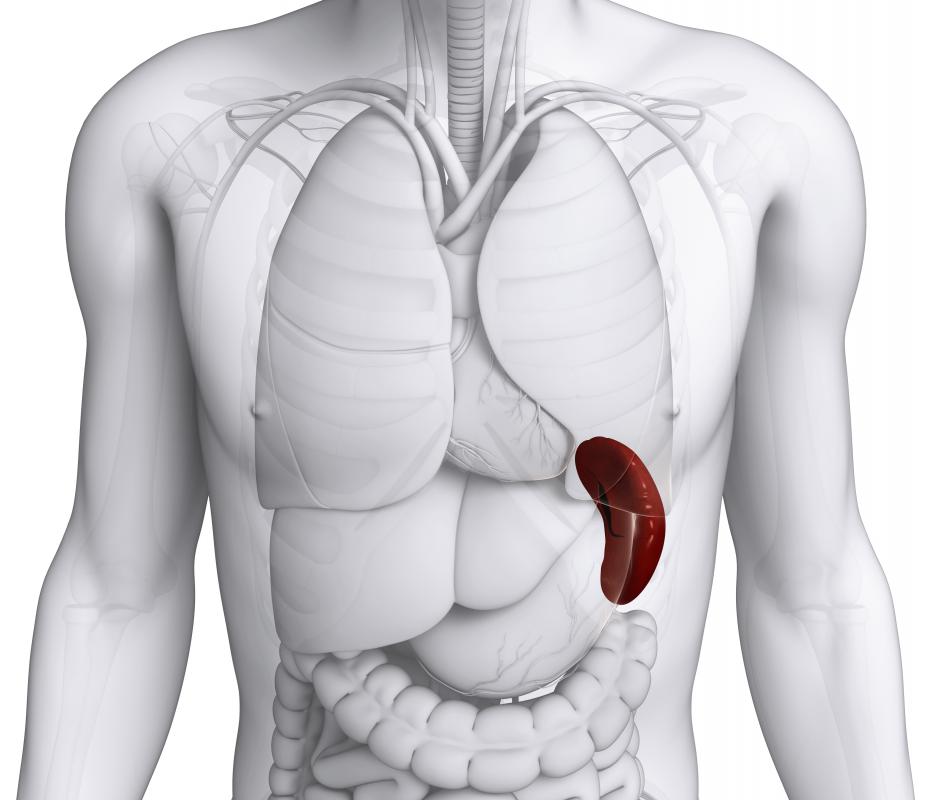At WiseGEEK, we're committed to delivering accurate, trustworthy information. Our expert-authored content is rigorously fact-checked and sourced from credible authorities. Discover how we uphold the highest standards in providing you with reliable knowledge.
What Is a Viscus?
All of the internal organs of an organism are known collectively as the viscera. When an anatomist refers to only one of these organs, the term is viscus. Typically, scientists tend to use the word viscus for those organs that are present in the central part of the body, which for humans is the chest.
Organs such as the brain, the skin and the larynx are not located in the central part of the body, and so anatomists may choose not to call one of these organs a viscus. Many other organs, however, do fall into the viscera group. Typically, these are the organs that a hunter removes from an animal in the field during the gutting process.

A viscus can be part of the gastrointestinal or urinary tract, circulatory system or respiratory system. Depending on the gender of the person, a viscus can also form part of the reproductive tract. Most of these organs in a human are located in the abdominal cavity, below the lungs. Respiratory viscera are the lungs, and the diaphragm muscle below the lungs acts as the upper border of the abdominal cavity. The heart viscus nestles between the lungs, also above the diaphragm.

Parts of the viscera are packed together in the abdominal cavity, and most of these have some freedom of movement relative to one another. These include the various organs of the digestive tract, that are attached to the back wall of the abdomen. The topmost organs are the liver and the stomach.
Attached to the stomach is the small intestine, along with the pancreas and gallbladder. Behind the stomach lies the spleen, an organ that plays a role in the immune system, and therefore is not technically part of the digestive tract. The small intestine viscus empties into the large intestine, and this long tube makes its way down to the outside of the body.

The kidneys are stuck on to the back abdominal wall, and lack the freedom of movement of the other abdominal viscera. They are located below the stomach. Waste products then drain from the kidneys into the bladder, located lower down, which then drains the waste out of the body. Reproductive viscera in the chest generally refer to female organs such as the uterus. The male reproductive system does not fall under the general use of the term viscus, as most of these organs are external.
AS FEATURED ON:
AS FEATURED ON:















Discuss this Article
Post your comments